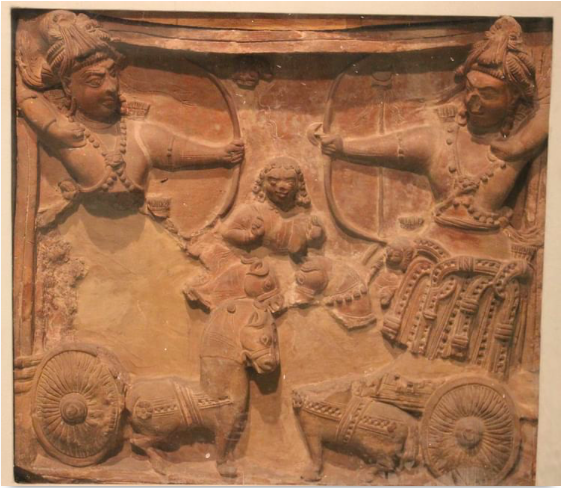Kutayuddh – Why the art of covert warfare is the need of the hour (Part 1)


Historically, the Rigveda, which is extremely absolutist in its stance towards warfare, talks about the covert art of war in a very matter of fact manner. The purpose of Rigveda is to advise the king or the ruler on how to run affairs of the state, and it minces no words to highlight the space that bloodymindednes holds in achieving national interest goals on some ocassions. According to Rigveda, it is the duty of the ruler / king to destroy the enemy, by fair means or foul.
If we look at later interpretations of Rigveda, the Sukraniti from 6th century BC ascertains that the main responsibilities of the king should be towards the protection of his subjects and punishment of the offenders. It focuses on the use of Kuttayudh insead of conventional warfare to bring down the enemy, as it is more focused and also less expensive / expansive. The Sukraniti gives a list of all the tactics which can be applied to save resources while having the goals realised, and these include spies, assasinations, poisonoings, explained in great detail in the book. Rigveda explains that the concern for the state and citizens should always come above any sense of morality, and that a ruler should always be amoral when it comes to such matters.
The statecraft compiled by Chanakya in Arthashastra also contains a bit of this, and all of these pre dated literature is very contemporary in terms of the methods suggested as part of spycraft. Now we as Hindus are brought up with the perception that overall we are a non aggressive and morally astute people no matter what circumstances we are faced with. So the question arises, how do Hindus correspond with this altogether separate form of Hinduism present in the Rigved. The answer to this is, Hinduism is not a faith of a single book, and the morals and ethics that we identified with all our lives, may not be the need of the hour at all times. Afterall, we cannot just dismiss the Rigved and all that it teaches us. In fact, if one considers Hinduism as a ‘religion’, the Rig Ved can very well be considered as its primary literature.
Over time, the Indian statecraft was straitjacketed by Nehru, as he may have considered submission and bovine pacifism as the only way to carve out a place for the post British India. The concept of a responsible state that we are stuck with revolved around morality and pacifism, perceptions which are now victimising us. It so appears that we are the only responsible state around in the gamefield, and other players including China, UK and USA are all comfortably using all options available to them. The bogus packaging of morality and self imposed historical sense created by Nehru became redundant as soon as the coldwar era was over, but we were not allowed to shun it and come into our own.
The modern notions of Kutayuddh include everything that one can think of, somewhat like psychological operations, on how to influence the public of the enemy nation to act against its rulers. In an example of early use of psychological warfare, in the 15th century BC, the Persians used cats in their war against the Egyptians, as the latter worshipped cats. Later on, Chengez Khan created an aura of terror around himself and his army, when he proceeded to decimate a few villages while leaving some people alive, with a purpose that they will take news of his terror forward to other villages. They would then be rendered unable to put up a defense as they would be so terrorised. This is the power of Kuttayudh; one does not have to confornt the adversaries at a large scale, as the fight is alredy won in the mind.
To read Part Two of this trilogy, click on the link below
Kuttayudh – Why the art of covert war is the need of the hour (Part 2)
DISCLAIMER: The author is solely responsible for the views expressed in this article. The author carries the responsibility for citing and/or licensing of images utilized within the text.
